To Sharjah and beyond - Marhatta Airport |
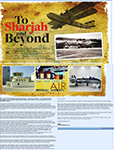 |
<<Click to see original |
Many people living and working in the UAE are under the impression that SharjahInternationalAirport – home to Air Arabia – is the oldest airport in the Gulf Region. But, as Brian Salter discovered, although Sharjah does hold that accolade, the original Sharjah Airport was located in what is now very much downtown-Sharjah, right by the Immigration Department on King Abdul Aziz Road….
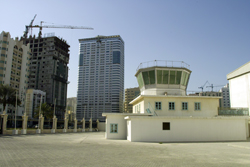
Long before the establishment of the UAE, when Sharjah was one of the Trucial States, the British had a problem. Imperial Airways had been established in 1924, charged with the task of pioneering a chain of long-distance intercontinental air services linking the countries of the British Empire with each other and with the United Kingdom. On 1st April 1931, the first experimental London-Australia air mail flight took place. The mail was transferred to an Australian aircraft at Koepang in the Netherlands East Indies, and it arrived on the 29th April in Sydney.
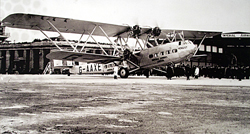
The route was made possible by the introduction of the Handley Page H.P. 42, 'Hannibal' - the world's first practical four-engined airliner - flying out of Cairo and Alexandria to Karachi with 24 seats on board and provision for a large quantity of mail. These aircraft brought a new standard of service, comfort, and safety to passengers, with four to seven course meals and drinks served from a trolley. The Pullman style upholstery was unrivalled, and even though only eight of them were ever built they flew over a million miles. In service the H.P. 42s were probably more popular with their passengers than any airliner in the world at that time.
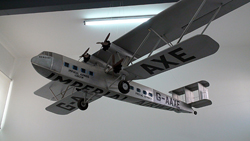
Up until the 1930s, there were several stations through which military and civil airplanes used to cross on their journeys from Europe to Asia, many in what was then Persia. But the contract for using the Persian coast route was cancelled in 1932, just as interest in the new flying capability was growing, and it became clear that a new staging post in the region needed to be established. Imperial Airways needed somewhere between Bahrain and Muscat to refuel, and the British accordingly approached Sharjah's Sheikh Sultan bin Saqr al Qasmi, who offered them a site just to the southeast of his city. (It is said that the Sheikh distrusted paper money and for many years was paid in silver coinage for the use of the airfield!)
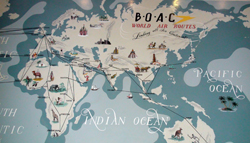
The RAF duly built a runway on an area of hard, flat sand running northwest to southeast, and Imperial Airways built a rest house in the form of an open square courtyard with accommodation in the enclosed wings, and with a control tower and wireless station in one corner. And so it was that from October 1932 Imperial Airways passengers in their Handley Page HP42s en route between London and India stayed overnight at what became known as Al Mahatta Fort.
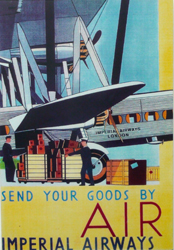
From 1950, the fort was used as the headquarters of the Trucial Oman Scouts, who policed the area between Saudi Arabia and Oman. In the 1960s, a new terminal was built and the airport became a base for training pilots.
The rapidly growing town of Sharjah eventually threatened to envelop Al Mahatta, and a new airport had finally to be built in the desert south of Sharjah in 1977. Following its closure, Al Mahatta was eventually transformed into an air museum in 1998. The old runway became King Abdul Aziz Street, now right in the town centre.
Yet despite its close proximity to the town, the old airport museum appears to have been forgotten – certainly judging by the tiny handful of visitors it receives these days – which is a shame given the fascinating items it has on display which are guaranteed to enthral young and old alike.
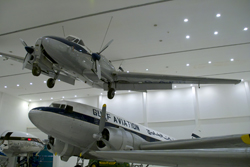
Pride of place goes to a collection of 60-year-old aircraft housed in the hangar – a Heron; a DC3 (Dakota); an Anson; and a Dove. In 2007, the nose and cockpit of a Comet were added to the collection – all that remains of the first jet airliner to land at Sharjah.
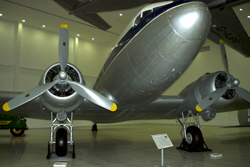
And as you wander through into the old rest house bedrooms, you can see an amazing assortment of historic photographs, models and paraphernalia from the "golden age of flying", with pieces of tailfin, displays of engines and wheels, and even a black box (or flight data recorder).
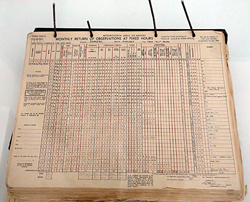
There is also a 20 minute film showing "a day in the life" of the old RAF station with the preparations and subsequent arrival of an HP42 in the early 1930s - a fascinating step back in time with vast expanses of Sharjah seen as hardly more than a featureless desert stretching all the way to the horizon.
As if this isn't enough, there is also a permanent display of man's attempts to fly, including oversized models of bats and flying insects extending all the way up to man's landing on the moon. You can even get up close to the engine of an Airbus A320.
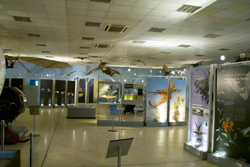
Entry to the museum is a mere Dhs5, or Dhs10 for an entire family; and the museum is open six days a week, Sunday to Friday. There is free parking inside the museum grounds.
